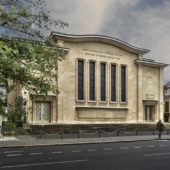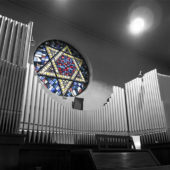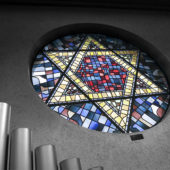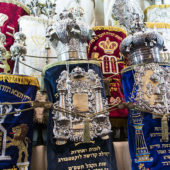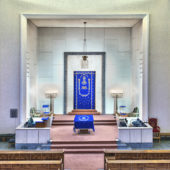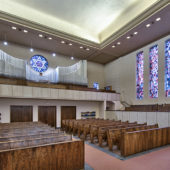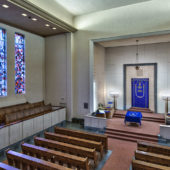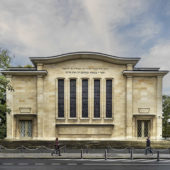One of the first synagogues in Europe to be rebuilt after World War II.
There are approximately 1200 Jews in Luxembourg. While this is a small number, Luxembourg’s Jewish community is one of the few in Europe to have a larger Jewish population today than it had before the Holocaust. Judaism is recognized and supported by the government as one of the major state-mandated religions. The first record of a Jewish community in Luxembourg dates back to 1276. By 1927 the population had grown to 1,171 most of whom had immigrated to avoid persecution in Eastern Europe. When the Second World War broke out the Jewish population had grown to about 4,200 due to the arrival of refugees from Germany and Central Europe.
Many of the Jews of Luxembourg survived the Holocaust by emigration. One of the figures most instrumental in this effort was Rabbi Dr. Robert Serebrenik who was one of the last Jews to leave Luxembourg. With 61 refugees he established Congregation Ramath Orah in New York City. The extraordinary story of Serebrenik’s efforts and the escape from Nazi occupation may be read at http://www.ramathorah.org/our-history.html.
After the Holocaust approximately 1,500 Jews returned to Luxembourg. During the second half of the twentieth century, Luxembourg’s Jewish population gradually shrank, as families emigrated to Israel and other countries. In recent years, a wave of immigration by young Jews, mainly from France, attracted by good working conditions, has compensated somewhat the shrinking of the Jewish population.
The Great Synagogue of Luxembourg, dating from 1894, was destroyed in August 1943 by an Italian contractor. According to the Luxembourgers, no local contractor was prepared to take on the job of demolishing the domed Moorish style building. On June 28, 1953 the Luxembourg City Synagogue was dedicated. It was one of the first synagogues in Europe to be rebuilt after World War II. The new building, which also houses the Jewish Community offices, combines Art Deco and Modernist motifs.

